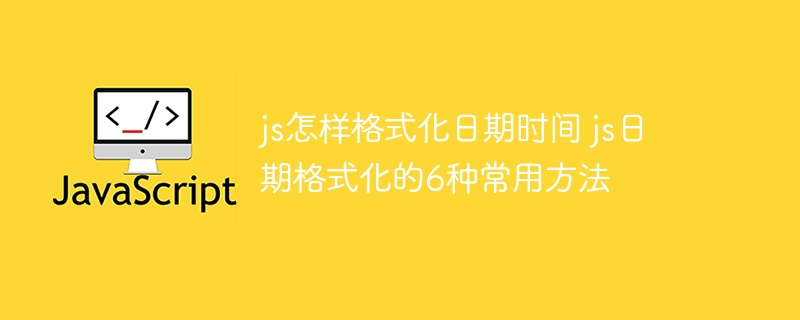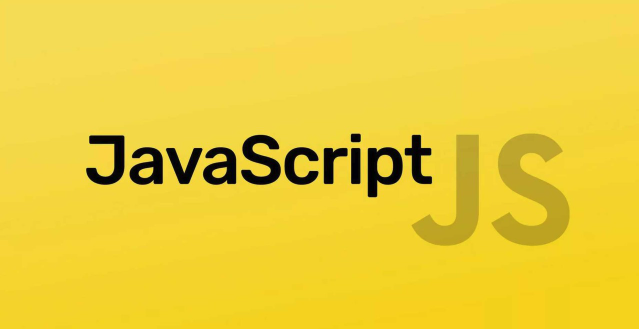JS日期格式化6种实用方法解析
时间:2025-06-27 16:25:32 345浏览 收藏
在JavaScript中,日期格式化是前端开发中常见的需求。本文深入解析JS日期格式化的六种常用方法,助你轻松应对各种场景。从简单快捷的`toLocale...`系列方法,到灵活可控的手动拼接字符串,再到性能优异的`Intl.DateTimeFormat`,以及功能强大的第三方库Day.js和date-fns,还有自定义扩展Date对象的方法,应有尽有。同时,文章还详细介绍了处理时区问题的多种方案,包括使用UTC方法、`Intl.DateTimeFormat`的`timeZone`选项,以及Day.js的timezone插件和date-fns-tz库。针对不同场景,如简单格式化、复杂定制、性能敏感和代码体积敏感等,给出选择建议,助你选择最合适的日期时间格式化方案,提高开发效率。
在JavaScript中格式化日期时间,可以通过多种方法实现。1. 使用toLocale...系列方法:简单快捷但不够灵活,适用于本地化格式输出;2. 手动拼接字符串:完全可控但代码冗长,适合需要精确格式的场景;3. 使用Intl.DateTimeFormat:灵活且性能好,适合需要高定制化的本地化格式;4. 使用Day.js:API简洁、功能强大,但需引入第三方库;5. 使用date-fns:模块化程度高,可按需引入,适合对代码体积敏感的场景;6. 自定义扩展Date对象:使用方便但可能造成原型污染,需谨慎使用。处理时区问题的方法包括:1. 使用Date对象的UTC方法:确保获取UTC时间但需手动转换;2. 使用Intl.DateTimeFormat的timeZone选项:可指定目标时区但需知道时区名称;3. 使用Day.js的timezone插件:方便强大但需引入插件;4. 使用date-fns-tz:与date-fns一致的设计风格,支持按需引入函数。选择合适的方法取决于具体需求,如简单场景可选toLocale...或Intl.DateTimeFormat,复杂场景可用Day.js或date-fns,性能敏感则推荐Intl.DateTimeFormat或手动拼接,代码体积敏感可考虑date-fns或手动拼接。

通常,在JavaScript中格式化日期时间,可以使用内置的Date对象结合一些方法,或者借助第三方库如Moment.js(现在推荐使用Day.js替代,体积更小)或date-fns。 下面将介绍几种常用的方法。

解决方案

使用
toLocale...系列方法: 这是最简单的方法,利用Date对象提供的本地化字符串转换功能。
const date = new Date(); console.log(date.toLocaleDateString()); // 输出:2024/10/27 (取决于你的本地设置) console.log(date.toLocaleTimeString()); // 输出:15:30:45 (取决于你的本地设置) console.log(date.toLocaleString()); // 输出:2024/10/27 15:30:45 (取决于你的本地设置) // 也可以指定locale和options console.log(date.toLocaleDateString('zh-CN', { year: 'numeric', month: 'long', day: 'numeric' })); // 输出:2024年10月27日这种方式的优点是简单快捷,缺点是格式受到用户本地设置的影响,不够灵活。 比如,有时你希望日期是
YYYY-MM-DD格式,用这个方法可能就比较困难。手动拼接字符串: 这是最灵活的方法,可以完全自定义格式。
const date = new Date(); const year = date.getFullYear(); const month = String(date.getMonth() + 1).padStart(2, '0'); // 月份从0开始,需要+1,并且补零 const day = String(date.getDate()).padStart(2, '0'); const hours = String(date.getHours()).padStart(2, '0'); const minutes = String(date.getMinutes()).padStart(2, '0'); const seconds = String(date.getSeconds()).padStart(2, '0'); const formattedDate = `${year}-${month}-${day} ${hours}:${minutes}:${seconds}`; console.log(formattedDate); // 输出:2024-10-27 15:30:45这种方式的优点是完全可控,缺点是代码比较冗长,容易出错。 而且,处理时区问题会比较麻烦。
使用
Intl.DateTimeFormat: 这是ES2015引入的API,提供了更强大的本地化日期时间格式化功能。const date = new Date(); const formatter = new Intl.DateTimeFormat('zh-CN', { year: 'numeric', month: '2-digit', day: '2-digit', hour: '2-digit', minute: '2-digit', second: '2-digit', hour12: false // 24小时制 }); console.log(formatter.format(date)); // 输出:2024/10/27 15:30:45Intl.DateTimeFormat比toLocale...系列方法更灵活,可以更精确地控制格式,而且性能更好。 但是,API相对复杂一些。使用
Day.js:Day.js是一个轻量级的日期时间处理库,API设计与Moment.js类似,但体积更小。// 首先需要安装Day.js: npm install dayjs import dayjs from 'dayjs' const date = new Date(); console.log(dayjs(date).format('YYYY-MM-DD HH:mm:ss')); // 输出:2024-10-27 15:30:45Day.js的优点是API简洁易用,功能强大,体积小巧。 缺点是需要引入第三方库。使用
date-fns:date-fns是另一个流行的日期时间处理库,它采用函数式编程风格,每个函数都是独立的,可以按需引入,避免引入不必要的代码。// 首先需要安装date-fns: npm install date-fns import { format } from 'date-fns' import { zhCN } from 'date-fns/locale' // 引入中文locale const date = new Date(); console.log(format(date, 'yyyy-MM-dd HH:mm:ss', { locale: zhCN })); // 输出:2024-10-27 15:30:45date-fns的优点是模块化程度高,可以按需引入,避免代码冗余。 缺点是API相对复杂一些。自定义扩展
Date对象: 可以为Date对象添加自定义的format方法。Date.prototype.format = function(fmt) { const o = { 'Y+': this.getFullYear(), // 年份 'M+': this.getMonth() + 1, // 月份 'D+': this.getDate(), // 日 'H+': this.getHours(), // 小时 'm+': this.getMinutes(), // 分钟 's+': this.getSeconds(), // 秒 'q+': Math.floor((this.getMonth() + 3) / 3), // 季度 'S': this.getMilliseconds() // 毫秒 }; if (/(Y+)/.test(fmt)) { fmt = fmt.replace(RegExp.$1, (this.getFullYear() + '').substr(4 - RegExp.$1.length)); } for (let k in o) { if (new RegExp('(' + k + ')').test(fmt)) { fmt = fmt.replace(RegExp.$1, (RegExp.$1.length == 1) ? (o[k]) : (('00' + o[k]).substr(('' + o[k]).length))); } } return fmt; } const date = new Date(); console.log(date.format('YYYY-MM-DD HH:mm:ss')); // 输出:2024-10-27 15:30:45这种方式的优点是使用方便,缺点是会污染
Date对象原型,可能与其他代码冲突。 需要谨慎使用。
js格式化日期时间时,如何处理时区问题?
处理时区问题是一个复杂的话题,因为涉及到用户的地理位置、夏令时等因素。 以下是一些常用的方法:
使用
Date对象的UTC方法:Date对象提供了一系列UTC方法,可以获取UTC时间。 例如,getUTCDate(),getUTCHours(),getUTCMinutes()等。 可以先将日期时间转换为UTC时间,然后再进行格式化。const date = new Date(); const year = date.getUTCFullYear(); const month = String(date.getUTCMonth() + 1).padStart(2, '0'); const day = String(date.getUTCDate()).padStart(2, '0'); const hours = String(date.getUTCHours()).padStart(2, '0'); const minutes = String(date.getUTCMinutes()).padStart(2, '0'); const seconds = String(date.getUTCSeconds()).padStart(2, '0'); const formattedDate = `${year}-${month}-${day} ${hours}:${minutes}:${seconds} UTC`; console.log(formattedDate);这种方法可以确保日期时间是UTC时间,但需要手动进行时区转换。
使用
Intl.DateTimeFormat的timeZone选项:Intl.DateTimeFormat提供了timeZone选项,可以指定时区。const date = new Date(); const formatter = new Intl.DateTimeFormat('en-US', { year: 'numeric', month: '2-digit', day: '2-digit', hour: '2-digit', minute: '2-digit', second: '2-digit', timeZone: 'America/Los_Angeles' // 指定时区为美国洛杉矶 }); console.log(formatter.format(date));这种方法可以方便地将日期时间转换为指定的时区,但需要知道目标时区的名称。
使用
Day.js的timezone插件:Day.js提供了一个timezone插件,可以方便地进行时区转换。// 首先需要安装Day.js和timezone插件: npm install dayjs @types/dayjs timezone import dayjs from 'dayjs' import utc from 'dayjs/plugin/utc' import timezone from 'dayjs/plugin/timezone' // 导入timezone插件 dayjs.extend(utc) dayjs.extend(timezone) const date = new Date(); console.log(dayjs(date).tz('America/Los_Angeles').format('YYYY-MM-DD HH:mm:ss')); // 转换为美国洛杉矶时区这种方法使用方便,功能强大,但需要引入第三方库和插件。
使用
date-fns-tz:date-fns本身不直接支持时区,但有一个单独的库date-fns-tz可以用来处理时区。// 首先需要安装date-fns和date-fns-tz: npm install date-fns date-fns-tz import { format } from 'date-fns' import { utcToZonedTime, formatInTimeZone } from 'date-fns-tz' const date = new Date(); const timeZone = 'America/Los_Angeles' const zonedDate = utcToZonedTime(date, timeZone) console.log(formatInTimeZone(zonedDate, timeZone, 'yyyy-MM-dd HH:mm:ss'))这个库与
date-fns的设计理念一致,按需引入函数,避免不必要的代码。
如何选择合适的日期时间格式化方法?
选择合适的日期时间格式化方法取决于你的具体需求。
简单场景: 如果只是简单地格式化日期时间,不需要太多的自定义,可以使用
toLocale...系列方法或Intl.DateTimeFormat。复杂场景: 如果需要完全自定义格式,或者需要处理时区问题,可以使用
Day.js或date-fns。性能敏感场景: 如果对性能要求比较高,可以使用
Intl.DateTimeFormat,或者手动拼接字符串。 避免在循环中频繁创建Day.js或date-fns对象。代码体积敏感场景: 如果对代码体积要求比较高,可以使用
date-fns,并按需引入函数。 或者,手动拼接字符串。
另外,还需要考虑浏览器的兼容性。 toLocale...系列方法和Intl.DateTimeFormat是ES5和ES2015引入的API,兼容性较好。 Day.js和date-fns需要引入第三方库,但可以提供更好的兼容性。
除了上述方法,还有一些其他的日期时间处理库,例如Luxon、js-joda等。 可以根据自己的喜好和需求选择合适的库。
终于介绍完啦!小伙伴们,这篇关于《JS日期格式化6种实用方法解析》的介绍应该让你收获多多了吧!欢迎大家收藏或分享给更多需要学习的朋友吧~golang学习网公众号也会发布文章相关知识,快来关注吧!
-
502 收藏
-
501 收藏
-
501 收藏
-
501 收藏
-
501 收藏
-
492 收藏
-
272 收藏
-
201 收藏
-
288 收藏
-
409 收藏
-
402 收藏
-
163 收藏
-
107 收藏
-
484 收藏
-
259 收藏
-
431 收藏
-
461 收藏
-

- 前端进阶之JavaScript设计模式
- 设计模式是开发人员在软件开发过程中面临一般问题时的解决方案,代表了最佳的实践。本课程的主打内容包括JS常见设计模式以及具体应用场景,打造一站式知识长龙服务,适合有JS基础的同学学习。
- 立即学习 543次学习
-

- GO语言核心编程课程
- 本课程采用真实案例,全面具体可落地,从理论到实践,一步一步将GO核心编程技术、编程思想、底层实现融会贯通,使学习者贴近时代脉搏,做IT互联网时代的弄潮儿。
- 立即学习 516次学习
-

- 简单聊聊mysql8与网络通信
- 如有问题加微信:Le-studyg;在课程中,我们将首先介绍MySQL8的新特性,包括性能优化、安全增强、新数据类型等,帮助学生快速熟悉MySQL8的最新功能。接着,我们将深入解析MySQL的网络通信机制,包括协议、连接管理、数据传输等,让
- 立即学习 500次学习
-

- JavaScript正则表达式基础与实战
- 在任何一门编程语言中,正则表达式,都是一项重要的知识,它提供了高效的字符串匹配与捕获机制,可以极大的简化程序设计。
- 立即学习 487次学习
-

- 从零制作响应式网站—Grid布局
- 本系列教程将展示从零制作一个假想的网络科技公司官网,分为导航,轮播,关于我们,成功案例,服务流程,团队介绍,数据部分,公司动态,底部信息等内容区块。网站整体采用CSSGrid布局,支持响应式,有流畅过渡和展现动画。
- 立即学习 485次学习
